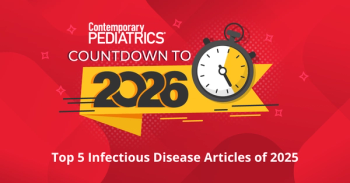
Healthy prenatal diet could be upstream obesity prevention strategy
"Our findings support the recommendation of a healthy diet based on the current guidelines (as measured by the HEI) during pregnancy, since it may reduce patterns of infant growth outside reference ranges."
Prenatal diets that aligned with the US Dietary Guidelines were associated with reduced patterns of rapid and slow infant growth, which are known risk factors associated with obesity, according to a recent study published in JAMA Network Open. These findings suggest that following a prenatal diet within these guidelines could represent an upstream obesity prevention strategy for the child.1
Background
The study authors noted that nearly one-third of children in the United States have overweight or obesity, causing several government and medical institutes to urge for more research to inform the upstream prevention of obesity.2
Nutrition amid pregnancy could be associated with both infant size at birth and longer-term growth kinetics, according to the study authors.1
"Being born large for gestational age (LGA) is associated with later-life obesity, whereas being born small for gestational age (SGA) is associated with several adverse cardiometabolic outcomes," stated the investigative team.
"Both slow and rapid weight gain during the first year of life are associated with later-life obesity risk. Two dietary indices defined a priori are the 2015 Healthy Eating Index (HEI), a measure of healthy diet based on adherence to the US Department of Agriculture (USDA) Dietary Guidelines for Americans, and the Empirical Dietary Inflammatory Pattern (EDIP), an index developed to reflect the proinflammatory potential of the diet, which has been associated with levels of inflammatory markers and cardiometabolic outcomes outside of pregnancy."
Study details and results
With the objective to evaluate the associations of prenatal dietary quality per the HEI and EDIP with infant size at birth and growth from birth to 24 months, the investigators used data from birthing parent-child dyads in 8 cohorts.
The cohorts were from the Environmental influences on Child Health Outcomes program between 2007 and 2021, with data analyzed from March 2021 to August 2024.
Outcomes were infant birth weight (SGA, reference range, or LGA) and infant growth from birth to ages 6, 12, and 24 months. Growth was categorized as slow growth (weight-for-length z score [WLZ] score difference <−0.67), within reference range (WLZ score difference −0.67 to 0.67), or rapid (WLZ score difference, >0.67), according to the study.
The study featured 2854 birthing parent-child dyads with a median maternal age of 30 years. More than 50% of infants were male (n = 1464).
Among a racially and ethnically diverse cohort, a high HEI score of greater than 80 (indicative of a healthier diet), was associated with lower odds of LGA (adjusted odds ratio [aOR], 0.88 [95% CI, 0.79-0.98]).
A high HEI was also associated with rapid growth from birth to 6 months of age aOR, 0.80 [95% CI, 0.37-0.94]) and age 24 months (aOR 0.82 [95% CI, 0.70- 0.96]), as well as slow growth from birth to age 6 months (aOR, 0.65 [95% CI, 0.50-0.84]), 12 months (aOR, 0.74 [95% CI, 0.65-0.83]), and 24 months (OR, 0.65 [95% CI, 0.56-0.76]) compared with an HEI score 80 or lower, according to study results.
No association between high HEI and SGA was observed (aOR, 1.14 [95% CI, 0.95-1.35]).
A low EDIP score, less than or equal to 63.6 (indicative of a less inflammatory diet), was associated with higher odds of LGA (aOR, 1.24 [95% CI, 1.13-1.36]) and rapid infant growth from birth to age 12 months (aOR, 1.50 [95% CI, 1.18-1.91]).
This association was also observed for lower odds of rapid growth to age 6 months (aOR, 0.77 [95% CI, 0.71-0.83]). However, no association with SGA (aOR, 0.80 [95% CI, 0.51-1.25]) compared with an EDIP score of 63.6 or greater was observed.
Conclusion
"In this cohort study among a large and diverse population of pregnant individuals from across the US, we found that consuming a healthier diet in pregnancy in adherence with current USDA guidelines was associated with having an infant with reduced risk of LGA and with greater odds of having a healthier growth trajectory during the first 2 years of life," stated the authors.
"Our findings support the recommendation of a healthy diet based on the current guidelines (as measured by the HEI) during pregnancy, since it may reduce patterns of infant growth outside reference ranges, which are risk factors associated with obesity. The associations between the EDIP and infant growth are less clear and warrant further study," they wrote.
References:
1. Hedderson MM, Schuh HB, Knapp EA, et al. Prenatal Diet and Infant Growth From Birth to Age 24 Months. JAMA Netw Open. 2024;7(11):e2445771. doi:10.1001/jamanetworkopen.2024.45771
2. Schwarzenberg SJ, Georgieff MK; Committee on Nutrition. Advocacy for improving nutrition in the first 1000 days to support childhood development and adult health. Pediatrics. 2018;141(2):e20173716. doi:10.1542/peds.2017-3716
Newsletter
Access practical, evidence-based guidance to support better care for our youngest patients. Join our email list for the latest clinical updates.




